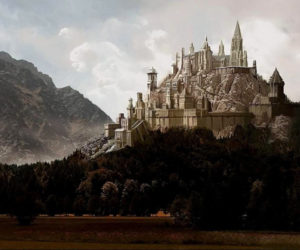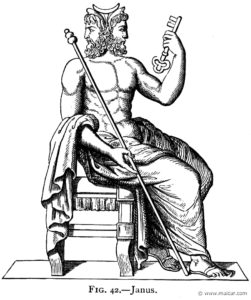In order to ‘serve humanity,’ or ‘save all sentient beings,’ do you have to believe that such an entity as ‘Humanity’ is more real than you are?
A question like this revives the thousand-year debate between nominalism and realism (introduced in Chapter 12), by showing its ethical and social implications. Which has priority, the individual or the collective (the community, the state, ….. )? In biological terms, which really counts, the individual organism or the species? For Peirce, this was perhaps one of the most momentous of logical questions.
But though the question of realism and nominalism has its roots in the technicalities of logic, its branches reach about our life. The question whether the genus homo has any existence except as individuals, is the question whether there is anything of any more dignity, worth, and importance than individual happiness, individual aspirations, and individual life. Whether men really have anything in common, so that the community is to be considered as an end in itself, and if so, what the relative value of the two factors is, is the most fundamental practical question in regard to every public institution the constitution of which we have it in our power to influence.
— Peirce (EP1:105)
Certainly the question is fundamental when it comes to political institutions. But as Northrop Frye pointed out (Chapter 8), you cannot escape the question by turning from secular politics to religion, for ‘religious bodies do not effectively express any alternative of loyalty to the totalitarian state, because they use the same metaphors of merging and individual subservience.’ States and religious bodies are the larger-scale systems which ‘contain’ individual humans; but suppose we consider the social evolution and spiritual progress of humanity over an expansive time scale while maintaining the spatial scale of the human bodymind. Then we can see each human individual as a current version of humanity rather than a minute cell in a huge organism. This would seem to be compatible with the following remarks by Frye, which continue from those already quoted in Chapter 8:
In our day Simone Weil has found the traditional doctrine of the Church as the Body of Christ a major obstacle – not impossibly the major obstacle – to her entering it. She points out that it does not differ enough from other metaphors of integration, such as the class solidarity metaphor of Marxism, and says:
Our true dignity is not to be parts-of a body.… It consists in this, that in the state of perfection which is the vocation of each one of us, we no longer live in ourselves, but Christ lives in us; so that through our perfection Christ … becomes in a sense each one of us, as he is completely in each host. The hosts are not a part of his body.
I quote this because, whether she is right or wrong, and whatever the theological implications, the issue she raises is a central one in metaphorical vision, or the application of metaphors to human experience. We are born, we said, within a pre-existing social contract out of which we develop what individuality we have, and the interests of that society take priority over the interests of the individual. Many religions, on the other hand, in their origin, attempt to be re-created societies built on the influence of a single individual: Jesus, Buddha, Lao Tzu, Mohammed, or at most a small group. Such teachers signify, by their appearance, that there are individuals to whom a society should be related, rather than the other way around. Within a generation or two, however, this new society has become one more social contract, and the individuals of the new generations are once again subordinated to it.
Paul’s conception of Jesus as the genuine individuality of the individual, which is what I think Simone Weil is following here, indicates a reformulating of the central Christian metaphor in a way that unites without subordinating, that achieves identity with and identity as on equal terms. The Eucharistic image, which she also refers to, suggests that the crucial event of Good Friday – the death of Christ on the cross – is one with the death of everything else in the past. The swallowed Christ, eaten, divided, and drunk, in the phrase of Eliot’s ‘Gerontion,’ is one with the potential individual buried in the tomb of the ego during the Sabbath of time and history, where it is the only thing that rests. When this individual awakens and we pass to resurrection and Easter, the community with which he is identical is no longer a whole of which he is a part, but another aspect of himself, or, in the traditional metonymic language, another person of his substance.
— Frye (1982, 100-01)

